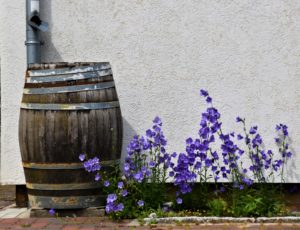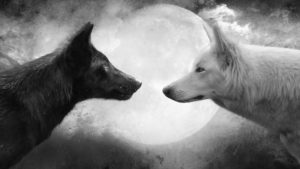(This post is Part II of a three-part series on loving the world inspired by, and including poems from, my newest poetry collection, Pebbles, coming June 1st. See Part I and Part III here.)
Behind my home, there is a beautiful trail that goes up into the hills of Mount Tamalpais. I have been walking it almost every day, appreciating so much about this gift of a world we have the privilege of experiencing. And the more I walk this same path again and again, the more I notice about the complex and dynamic landscape around me.
For example, different times of day will unveil different colors and textures in my surroundings. The south facing hill will be bright yellow and green in the morning. As the sun passes over the hill in the evening, the colors become more muted and gentle.
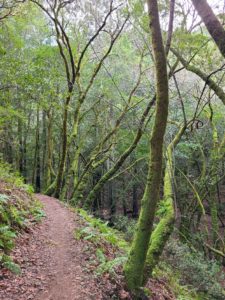
These colors and textures change too depending on the weather. When the rain comes, little streams begin to form in the small valleys. Occasionally fog rolls into the hills, giving everything an eerie quality that also shines with the dew that cool moisture brings. As I have walked the same path over changing seasons, I have seen how and when different plants turn from green to brown in the dry summer months, while others remain resilient to the changing temperatures.
Of course, sight isn’t the only sense that becomes awakened during these walks. I have also found myself tuned into the sounds around me, like the large redwoods that creak when they sway in the wind. As I have learned to tune my ears deeper into the soundscape, I have been able to distinguish the different sounds that lizards, snakes, birds, or mice make in the grass and leaves. Birds, for example, will often hop hop hop and pause in the grass, while a lizard will rapidly scuttle through leaves and then pause to look around. Snakes, obviously, have a much more consistent slithering sounds to their movement, while mice tend to be the most quiet, as they move slowly, with more intention to stay hidden in their search for seeds and insects.
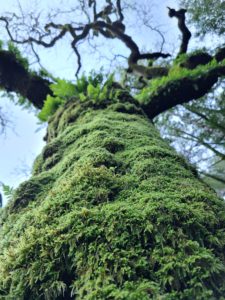
I’ve also found out where the animals live, which tree is home to a family of owls and where the mice raise their young. I have discovered deer trails that go to low hanging trees that provide shelter in nighttime.
Each day brings something new and exciting to discover. Nothing in the natural world is static, everything is moving, shining, shimmering, growing, or decaying. Like Mary Oliver writes, I have found the lovely work of loving the world, which is “mostly standing still and learning to be astonished.”
From Disconnection to Reconnection
While I have found so much delight in the ocean of small beauties in the world, many people I pass on the path do not seem to notice at all. What surprises me more than the mushrooms that spring up from ash, is that a vast majority of the people I encounter on this beautiful trail are not paying the same kind of attention to the forest around them. Most solo hikers I pass have headphones in their ears, or are yelling at their dog to stay on the trail. When I pass by larger groups, they are of course chatting to each other about work and kids and the latest movie.
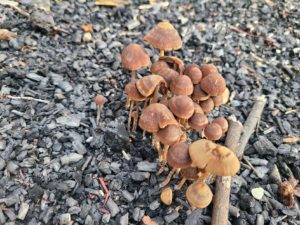
I don’t want to diminish how others spend their time in the world; nor am I immune to the same separation as I return to my own home and plug in my own headphones to write this blog post. I simply want to point out that we humans have a penchant for separation, and we are becoming more and more disconnected from the natural vibrant world with each passing generation.
The average human today is quite disconnected–more than ever before–from the natural world that sustains us. As we move from our home to the car, to the road, to the office, to the store, to the mall, to the movies, we spend every minute of our days surrounded by artificial, man-made environments. Even when we’re outside, we bring our screens with us, plugging our headphones in to listen to other people talking. We listen to the news more than the rivers. We sit in front of our TVs much more than sunrises and sunsets. Living in this world, I also find myself in front of screens more than I ever thought I would be.
In her incredible book Braiding Sweetgrass, Professor of Environmental and Forest Biology Robin Wall Kimmerer wrote about this stark contrast that she observed in her students over the years. Robin noted that twenty years ago, students would come to her classes on forestry with memories of being children and playing in the creeks and forests behind their houses. They would want to learn more about the frogs they used to catch and the fireflies they used to see at night. But in more recent times her students come to her not with memories of playing in the living world, but of seeing these things on TV shows like Planet Earth.
The division we experience between “human” and “nature” is more stark than ever before. Last week, I wrote about how I believe the root cause of environmental destruction is the illusion of separation and I began to explore the idea that the way out of the illusion is by shifting our attention to the here and now, really exploring the world and discovering our role it in. I introduced the idea of pratityasamutpada, or dependent co-arising, to express the nature of this reality in which we live.
The truth of pratityasamutpada is one I continue to discover in my own practice, in how going deeper into ourselves we discover more about the world, and in discovering more about the world we go deeper into ourselves. John Seed, founder and director of the Rainforest Information Centre in Australia, put it marvelously when he wrote, “May we turn inwards and stumble upon our true roots in the intertwining biology of this exquisite planet. May nourishment and power pulse through these roots, and fierce determination to continue the billion-year dance.” If we are to save the world we must recognize our own connection and kinship to all living beings.
Home to Our Bodies, Home to Ourselves
And so one of the biggest obstacles to living in this world in a fully embodied and connected way are those pesky minds of ours that want to analyze and conceptualize everything around us. This is why I personally never liked the term “mindfulness.” I have always much preferred “loving awareness” because when we focus our nonjudgmental attention on this moment, there is no mind left. We simply meet the present moment with loving acceptance, and that same attention is the food of love. For me it’s never been a matter of stopping and smelling the roses, but stopping and loving the roses.
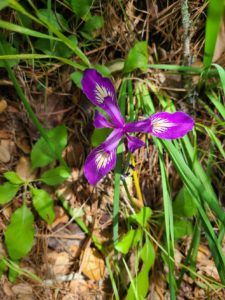
If we want to include the mind in our practice of loving awareness, we must make sure it is a beginner’s mind–one that sees the world with fresh new eyes and not from behind a veil of conceptualization rooted in the past. When we see a tree, we can appreciate it for the unique and incredible tree that it is, rather than judging it for being too crooked or not big enough. Sure, maybe you have seen flowers many times before, but you have not seen this flower at this particular place at this time in your life. In fact, even the term “flower” is just a label to describe a miracle of matter and energy vibrating and dancing right in front of you.
These ideas inspired me to write the following words–part of a larger poem in Pebbles:
become new to the world
born every momentas if each blade of grass was singing
there is more joy here
than we can ever know
I found inspiration for this poem in another insight from the yoga world, which explains that, once the mind becomes calm, we are able to rest in our true nature of loving-awareness. That true nature is one of limitless bliss; often summed up as sat chit ananda, or “truth consciousness bliss,” the pure happiness and satisfaction that accompanies conscious awareness. To get there, we calm the mind, because, as the Bhagavad Gita explains, “Abiding joy comes to those who still the mind.”
But of course, being present isn’t just about noticing the sun, flowers, and birds around us. It also means remaining present through the challenges as well, which brings me to the topic of next week’s post: turning our attention to the issues that matter.

